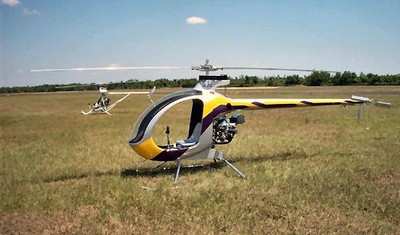Thu, May 24, 2018
Pilot Says Amateur-Built Aircraft Experienced A Loss Of Power During Flight
The NTSB has released its preliminary report from an accident involving an amateur-built Mosquito XE helicopter that resulted in the serious injury of the aircraft's pilot.

According to the report, on April 24, 2018, about 1403 eastern daylight time, an experimental, amateur-built Mosquito XE helicopter, N911CY, was destroyed by a postimpact fire after a hard landing shortly after takeoff from Gaines Valley Aviation Airport (NY06), Albion, New York. The private pilot was seriously injured. The helicopter was owned and operated by the pilot under the provisions of Title 14 Code of Federal Regulations Part 91. Visual meteorological conditions prevailed at the time and no flight plan was filed for the local flight.
According to an FAA inspector, the pilot advised him while hospitalized that after takeoff, while flying about twice the height of powerlines in a westerly direction over a field, the helicopter experienced a partial loss of engine power. He began looking for a place to land, and then the engine experienced total loss of power. He indicated that the helicopter did not have adequate main rotor rpm to autorotate, and as a result it impacted hard.
A witness who was driving on Gaines Road near NY06 reported observing the helicopter hovering approximately 6 ft above ground level adjacent to hangars. He then observed the helicopter ascend "straight up" to about twice the height as nearby powerlines, and then proceeded in a westerly direction crossing Gaines Road. He observed a "small piece" separate and then heard a popping sound that was immediately followed by a grinding sound. The helicopter then began a steep descent during which time a "second piece" separated from the helicopter. The helicopter impacted the ground and immediately burst into flames. He called 911, then responded to the accident site and rendered assistance to the pilot until first responders arrived.
The helicopter, which was equipped with an Innovator Technologies Inntec 800 two-stroke, two cylinder, 85 horsepower engine, was retained for examination.
(Image from file. Not accident aircraft)
More News
He Attempted To Restart The Engine Three Times. On The Third Restart Attempt, He Noticed That Flames Were Coming Out From The Right Wing Near The Fuel Cap Analysis: The pilot repor>[...]
Make Sure You NEVER Miss A New Story From Aero-News Network Do you ever feel like you never see posts from a certain person or page on Facebook or Instagram? Here’s how you c>[...]
From 2009 (YouTube Edition): Leading Air Show Performers Give Their Best Advice for Newcomers On December 6th through December 9th, the Paris Las Vegas Hotel hosted over 1,500 air >[...]
Aero Linx: NASA ASRS ASRS captures confidential reports, analyzes the resulting aviation safety data, and disseminates vital information to the aviation community. The ASRS is an i>[...]
“For our inaugural Pylon Racing Seminar in Roswell, we were thrilled to certify 60 pilots across our six closed-course pylon race classes. Not only did this year’s PRS >[...]
 NTSB Final Report: Rutan Long-EZ
NTSB Final Report: Rutan Long-EZ ANN FAQ: Turn On Post Notifications
ANN FAQ: Turn On Post Notifications Classic Aero-TV: ICAS Perspectives - Advice for New Air Show Performers
Classic Aero-TV: ICAS Perspectives - Advice for New Air Show Performers ANN's Daily Aero-Linx (06.28.25)
ANN's Daily Aero-Linx (06.28.25) Aero-News: Quote of the Day (06.28.25)
Aero-News: Quote of the Day (06.28.25)



